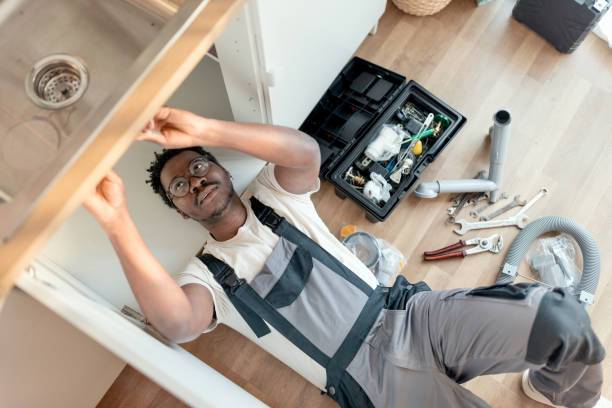
Buying your first home is exciting. But after the big move, the real responsibility begins, keeping the home reliable and safe.
Many new homeowners focus on decorating or making the house look nice, but small maintenance tasks are just as important. Doing them regularly saves money, prevents surprises, and makes living more comfortable.
Let’s look at 10 practical maintenance tasks every first-time homeowner should know.
Why Home Maintenance Matters for First-Time Owners
For first-time homeowners, it’s easy to think that a brand-new house or a freshly renovated one won’t need much attention. But the truth is, every home, no matter how new, needs regular care. Simple upkeep helps systems like plumbing, heating, and electricity run smoothly. It also protects the investment you’ve made in your home.
By staying on top of maintenance, you not only avoid expensive repairs but also build confidence in handling household responsibilities. This section of your life isn’t about waiting for something to break; it’s about creating habits that keep your home strong for years to come.
1. Learn How to Shut Off Utilities
One of the first things you should do is find the main shut-off points for water, gas, and electricity. In an emergency, like a leak or a short circuit, knowing where to turn things off can save your home from serious damage.
Walk around the house and locate the water valve, the main breaker panel, and the gas shut-off if you have one. Label them clearly and show your family members so everyone knows what to do. This one simple task can make you feel more in control right away.
2. Keep Gutters Clean and Clear
Gutters might not seem exciting, but they protect your roof and walls from water damage. When leaves and dirt block them, rainwater can overflow, damage walls, or even leak into basements. Cleaning gutters twice a year, usually in spring and fall, is a good practice.
If you live in an area with many trees, you might need to check them more often. Use a sturdy ladder and gloves, or hire a service if you’re not comfortable. Clean gutters mean water flows away from your home the way it should.
3. Change Air Filters in Your HVAC System
Heating and cooling systems work hard to keep your home comfortable. Dirty filters make them less efficient and raise energy bills. A clean filter also means cleaner air for your family.
Most filters should be replaced every one to three months, depending on the type and how much you use your system. Write the date on the filter when you change it so you remember. Your system will thank you with smoother operation and better air quality.
4. Test Smoke and Carbon Monoxide Detectors
Safety should always be top of mind. Smoke and carbon monoxide detectors are lifesavers, but they only help if they’re working. Test them every month by pressing the button.
Change the batteries at least once a year, even if the alarm hasn’t gone off. If your detectors are more than 10 years old, replace them entirely. Having reliable alarms gives you peace of mind, especially when you’re asleep at night.
5. Flush Out the Water Heater
Your water heater quietly does its job every day, but over time, sediment builds up inside. This makes it less efficient and shortens its life.
Flushing it once a year is simple. Turn off the heater, connect a hose to the drain valve, and let the water run into a safe spot outside until it’s clear. Then refill and restart it. Doing this keeps your showers hot and your system running well for years.
6. Watch Out for Plumbing Issues
Plumbing is one of those things you don’t notice until something goes wrong. Keep an eye on faucets, toilets, and under-sink pipes for small leaks. Fixing them early saves water and prevents damage. Learn where shut-off valves are in the kitchen, bathrooms, and laundry area.
In larger systems, valves like a butterfly valve are often used to control flow efficiently. Knowing how to operate valves in your home makes it easier to handle small problems before calling a plumber.
7. Check and Clean Dryer Vents
Your clothes dryer may seem harmless, but clogged dryer vents are a leading cause of home fires. Lint builds up in the vent pipe and reduces airflow.
Clean the lint trap after every load, and at least once a year, disconnect the vent and clean it fully. You can use a long brush or a vacuum attachment. Clean vents also help your dryer run more efficiently, saving energy and keeping clothes drying faster.
8. Maintain Your Yard and Exterior
The outside of your home needs just as much care as the inside. Trim trees and shrubs so they don’t touch your roof or siding. This prevents pests and reduces storm damage risk.
Check for cracks in the driveway or walkway and repair them before they get worse. Keep an eye on your roof for missing shingles or tiles. A little attention to your yard and exterior now helps prevent bigger problems later and also keeps your home looking welcoming.
9. Seal Windows and Doors
Drafty windows and doors not only make your home uncomfortable, but they also raise energy bills. Check the seals around them every year. If you feel air leaks, apply new weather stripping or caulk to close the gaps.
For windows, make sure they open and close smoothly, and the locks work. This small maintenance step keeps your home cozy in winter and cool in summer, while also saving money.
10. Schedule Professional Inspections
Even with regular DIY maintenance, some systems benefit from professional eyes.
Schedule inspections for your HVAC, plumbing, and electrical systems every few years. Professionals can spot early signs of trouble that you might miss.
For example, they can test wiring, check insulation, or ensure your plumbing valves are in top shape. A small inspection fee is a good investment to keep your home running without surprises.
Why These Tasks Matter
For first-time homeowners, learning these tasks might feel overwhelming at first, but each one is simple once you know what to do. Together, they keep your home safe, efficient, and comfortable.
Regular maintenance avoids costly repairs later. It also gives you confidence and a sense of ownership; you’re not just living in the house, you’re taking care of it.
Extra Tips to Build Good Habits
- Keep a home maintenance calendar. Mark tasks by season, like gutter cleaning in spring and fall, or water heater flushing once a year.
- Build a small toolkit with basics like screwdrivers, pliers, wrenches, a hammer, and a flashlight.
- Teach all family members small safety steps, like how to shut off water or test alarms.
- Set aside a yearly budget for home maintenance. It’s cheaper to prevent problems than fix big ones.
Conclusion
Owning a home is rewarding, but it comes with responsibility. By staying on top of these 10 tasks—knowing utility shut-offs, cleaning gutters, changing filters, testing detectors, flushing the water heater, checking plumbing and valves, cleaning dryer vents, maintaining the exterior, sealing windows and doors, and scheduling inspections—you’ll keep your home safe, reliable, and comfortable. These habits save money, prevent stress, and give you confidence as a first-time homeowner. A well-maintained home isn’t just a place to live—it’s a secure and happy space for you and your family.





